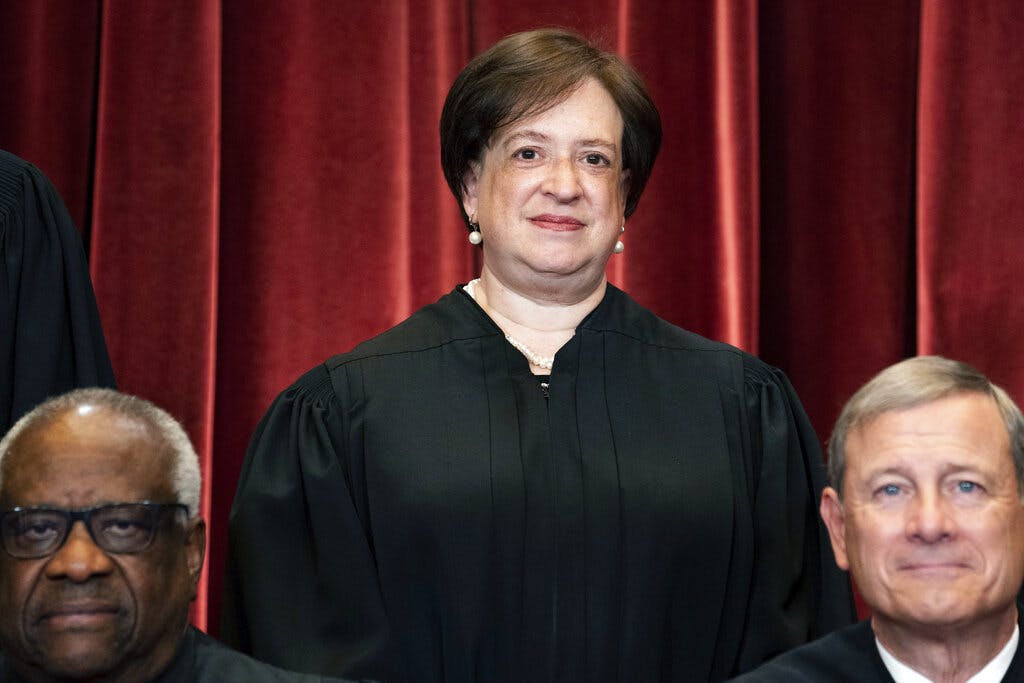Justice Kagan’s Recusal Note: Nothing But Trouble
In citing a non-binding code to explain her recusal, Justice Elena Kagan strikes a blow against the high court’s independence.

We can understand Justice Elena Kagan’s ambition someday to be Chief Justice. Not, though, if it comes at the cost of the independence of the court and the separated nature of its power. That concern is piqued by her explanation for recusing herself from hearing a petition. The watchdog Fix the Court calls it “possibly the first time ever, and definitely for the first time in more than 100 years,” that a Justice has given a reason for recusal. They need not explain.
So it’s shocking to see Justice Kagan’s citation, alongside the federal code which is binding on justices and judges alike, of the Code of Conduct for United States Judges. The full note reads “Justice Kagan took no part in the consideration or decision of this petition. See 28 U.S.C. §455(b) (3) and Code of Conduct for U.S. Judges, Canon 3C(1) (e) (prior government employment).” Only lower court justices owe fealty to that Code of Conduct.
The Chief Justices of the United States and Associate Justices of the Supreme Court do not, and the context here is important. Democrats are trying to breach the doctrine of separated powers to demand recusals — and a code of ethics — in order to turn the court to the left. In that context Justice Kagan’s note is nothing but trouble. For the Supreme Court already has both a recusal policy and a charter — the Constitution of the United States of America.
It says nothing about recusal and doesn’t require it or suggest that judges explain themselves. It mightn’t prohibit them explaining themselves, but Justice Kagan’s note departs from long established practice. In the middle of an attack on the court’s independence by Democratic senators, she looks like she’s currying favor with a Senate that has to confirm any Chief Justice. It’s a form of appeasement in the fight for the independence of the court.
Justice Kagan’s reach for a law that does not bind her — essentially citing dicta as precedent, to use the court’s jargon — comes after Chief Justice Roberts herded the justices together for their own “Statement of Ethics Principles and Practices.” That allows for a “summary explanation of a recusal decision” if such explanation is not “ill-advised.” The point here, though, is that Justice Kagan’s explanation is ill-advised — and will be seen so in the Senate.
It has to be acknowledged that the justices themselves have not been consistent on this head. In an end of year report in 2011, Chief Justice Roberts cited “misconceptions” as to whether the Judicial Code “applies only to the lower federal courts.” He notes that while the Nine are not required to abide by it, “All Members of the Court do in fact consult the Code of Conduct in assessing their ethical obligations.” Justice Kagan not only consults. She cites.
Even though the effort by Democrats to impose an ethics code on the court has not yet come to pass — Republicans are opposed, and see in it a reprisal for the Court’s and Senate’s rightward swing — it is already cutting into the Supreme Court’s sense of separation. Even the letter to Senator Durbin from Chief Justice Roberts, forever the umpire, seems to telegraph that he thinks yielding to the pressure could be prudent.
Justice Kagan is not unopposed, though. Justice Samuel Alito, in recusing himself in a subsequent case, was content with the standard language that he “took no part in the consideration or decision.” As the Chief’s statement puts it, “individual Justices, rather than the Court, decide recusal issues.” They do so, as we have reminded, with the “duty to sit” in front of mind. There are only nine justices. No one can fill in for a justice who recuses himself.
The Framers of our Constitution and Supreme Court did not intend the high court to be its own planet, spinning in its own orbit. Congress can contract or expand its jurisdiction, and pack it with more justices. It cannot lower their pay, though. Nor, argues real estate mogul Harlan Crow, friend to Justice Thomas, can Congress impose an ethics code on the court. So why is Justice Kagan doing so from within?

